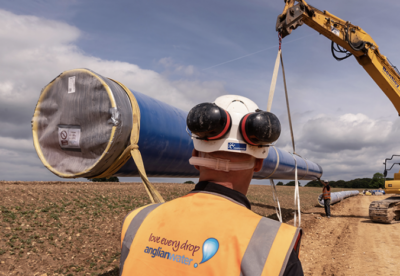Almost £11bn will be spent on repairing and replacing parts of the network.
Over the past five years Highways England has completed 36 major improvement schemes, including adding additional capacity on the M20 in Kent, the M6 in the Midlands and in Cheshire.
It has also completed 160 cycling improvements, reduced flooding at 260 locations, reduced noise at more than 1,170 locations and improved air quality at 101 locations, and its road improvements have helped unlock the building of 44,000 houses and the creation of 45,000 jobs.
The latest plans set out how Highways England will deliver the Government’s second Road Investment Strategy announced at the Budget in March. The company will:
- open more than 50 upgrades and save millions of hours by improving journey times
- invest almost £1bn on broader projects to improve roads for the communities they serve, such as conserving cultural heritage or strengthening flood resilience, and improving access for walkers, cyclists and horse riders
- make 7,500 households quieter by tackling noise from roads
- help stop the loss of biodiversity
- develop a pipeline of around 30 schemes for potential construction post 2025
It will take forward flagship projects to connect key parts of the country, including:
- a new road and tunnel under the Thames between Essex and Kent, adding capacity and speeding up journeys between the Channel ports and the rest of the country, which will improve access to jobs, housing, leisure and retail facilities on both sides of the river
- upgrading the A66, creating the first new Trans-Pennine dual carriageway since 1971, improving connections between ports in Scotland and Northern Ireland and those in England at Hull and Felixstowe.
- improving the major direct route between the South East and South West including a tunnel near the Stonehenge World Heritage Site
And it will deliver a series of major upgrades, such as improving: access to the Port of Liverpool; capacity on the A19 in Sunderland supporting local plans for an international advanced manufacturing park; journey times on the A38 with a scheme for the Derby junctions in the Midlands while providing extra facilities for walkers and cyclists; and the A12 in the East, aligning with local authority development plans.
As much of the network was built over 60 years ago and needs renewing the company will:
- resurface nearly 5,000 lane miles of road
- install or renew more than 1,000 miles of safety barriers on motorways and dual carriageways
- renew more than 170 bridges and other structures
- invest £300-400 million replacing ageing concrete sections on the A14, M5, M18, M20, M42, M54 and M56
Highways England chief executive to step down
Jim O’Sullivan has been at the helm of Highways England since 2015.
He said: “The people in Highways England and our supply chain have achieved great things in the past five years and I consider it a privilege to have worked with them.
“I leave Highways England well placed to deliver the second roads period and to prepare for the third. That makes it a good time to step down and I wish the sector and the company every success for the future.
Transport Secretary Grant Shapps said: “I’d like to thank Jim O’Sullivan for his hard work and commitment over the past five years.
“His successor will start at an exciting time for the company as it embarks on our ambitious £27.4billion Second Roads Investment Strategy. The programme will deliver on this government’s vision to level-up our roads infrastructure, connecting communities, creating jobs and boosting growth.”
























































